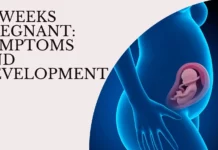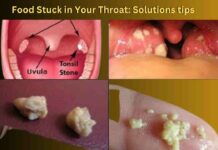In the ever-evolving landscape of fitness and exercise, there’s a term that has captured the attention of athletes, fitness enthusiasts, and professionals alike: EPOC.
The acronym stands for Excess Post-Exercise Oxygen Consumption, but what exactly does it mean, and why should it matter to you?
Imagine finishing a workout and knowing that your body continues to burn calories even after you’ve left the gym or completed your home workout routine.
This is where EPOC comes into play. EPOC represents the physiological phenomenon that leads to a sustained elevation in calorie burning post-exercise, turning your body into a calorie-torching machine even during rest.
Whether you’re striving to shed those extra pounds, enhance your endurance, or simply optimize your workout routine, understanding the science and benefits of EPOC can be your game-changing strategy.
In this comprehensive guide, we’ll embark on a journey to uncover the science behind EPOC, explore its impact on metabolism, delve into its connection to weight loss, and provide practical insights into maximizing this effect.
From beginners to fitness enthusiasts looking to take their routines to the next level, EPOC holds the promise of revolutionizing the way you approach your workouts.
Join us as we delve deep into the realm of Excess Post-Exercise Oxygen Consumption, revealing the secrets behind its effectiveness, exploring its role in calorie burning and fitness gains, and equipping you with the knowledge to unlock its full potential.
Get ready to embark on a transformative journey that transcends the confines of your workout and empowers you to reach new heights in your fitness endeavors. Welcome to the world of EPOC, where the afterburn becomes your greatest ally in the pursuit of health and well-being.
Demystifying EPOC

At the heart of optimizing your fitness routine lies a concept that holds the potential to revolutionize your post-workout gains: Excess Post-Exercise Oxygen Consumption, better known as EPOC.
This section aims to demystify EPOC by delving into its definition, understanding its contribution to calorie burning, and unveiling the myriad benefits it brings to your fitness journey.
EPOC stands as a dynamic physiological response that extends far beyond the cessation of your workout. After completing an exercise session, your body continues to require elevated levels of oxygen, a phenomenon known as EPOC.
This elevated oxygen demand fuels various processes aimed at restoring your body to its pre-exercise state.
As you work out, your body taps into its energy reserves, breaks down molecules, and demands increased oxygen intake to fuel these processes. Once your workout concludes, your body doesn’t simply halt its energy needs.
Instead, it enters a phase where it requires excess oxygen to restore oxygen levels in your muscles, repair damaged tissues, replenish energy stores, and normalize hormonal and metabolic functions. This post-exercise oxygen demand is the cornerstone of EPOC.
The magic of EPOC lies in its ability to elevate calorie burning even after your workout has ended. During EPOC, your body expends additional energy in the form of calories to fuel the intricate processes of recovery and restoration.
This extended period of heightened energy expenditure sets the stage for additional calorie burn beyond what’s experienced during the workout itself.
As you exercise, your body’s energy expenditure increases to meet the demands of your chosen activity. However, when the activity stops, the energy demands don’t immediately plummet back to baseline.
Instead, the body engages in processes that require energy, such as repairing damaged tissues, removing metabolic byproducts, and replenishing glycogen stores.
This ongoing energy demand translates to sustained calorie burn, and that’s where the magic of EPOC comes into play.
The afterburn effect, synonymous with EPOC, holds an array of benefits for fitness enthusiasts. After you’ve completed your workout, the enhanced calorie burn continues, contributing to your daily energy expenditure.
This can aid in creating a calorie deficit, a cornerstone of weight loss. Moreover, the afterburn effect amplifies the efficiency of your workouts, allowing you to achieve more in less time.
EPOC isn’t just about burning extra calories; it’s about optimizing your fitness gains. The heightened energy expenditure post-workout fosters a more efficient recovery process, which, in turn, supports muscle repair and growth.
This means that EPOC isn’t just a numerical increase in calorie burn—it’s a catalyst for your body’s transformative processes that lead to enhanced strength, endurance, and overall fitness gains.
Intriguing and captivating, the concept of EPOC unveils the body’s innate ability to extend the benefits of exercise well beyond the moment you put down your weights or step off the treadmill.
Armed with a solid understanding of what EPOC is, how it fuels calorie burn, and the comprehensive benefits it offers, you’re equipped to harness this phenomenon and propel your fitness journey to new heights.
Maximizing the EPOC Effect
Now that you’ve gained a solid understanding of what EPOC is and how it contributes to post-workout calorie burning, it’s time to delve into the strategies that can maximize the EPOC effect.
This section explores the nuances between EPOC and the afterburn effect, the types of exercises that trigger EPOC, and the key elements to consider when aiming to optimize this physiological phenomenon.
If you’re eager to make the most of the EPOC effect, there are several strategic approaches you can adopt. Incorporating high-intensity intervals within your workout routines can significantly elevate the magnitude and duration of EPOC.
Intervals that push your limits followed by brief recovery periods keep your body in a heightened state of energy demand post-workout.
Moreover, integrating resistance training into your regimen enhances EPOC by promoting muscle repair and growth, both of which require sustained energy expenditure.
High-intensity interval training (HIIT) serves as a potent tool for maximizing EPOC. The brief bursts of intense effort during HIIT workouts elicit a powerful metabolic response, leading to a robust afterburn effect.
Similarly, resistance training, whether using free weights, machines, or body weight, engages multiple muscle groups and triggers a heightened demand for energy post-workout.
As your muscles repair and grow, the energy expenditure persists, contributing to extended EPOC.
EPOC and the afterburn effect are often used interchangeably, but it’s important to recognize their connection and distinction.
EPOC is the physiological mechanism that leads to an elevated oxygen consumption post-exercise, resulting in a sustained calorie burn. The afterburn effect, on the other hand, refers to the actual experience of continued calorie burning after your workout is complete.
In essence, EPOC is the driving force behind the afterburn effect.
While EPOC and the afterburn effect are closely related, they differ in terms of emphasis. EPOC focuses on the increased oxygen consumption that fuels recovery processes, while the afterburn effect emphasizes the extended calorie burn that occurs as a result of EPOC.
Understanding this relationship allows you to strategically design your workouts to optimize both EPOC and the resulting afterburn.
Certain exercises have a remarkable ability to trigger significant EPOC due to their intensity and impact on various muscle groups. High-intensity cardio activities such as sprinting, jump squats, and burpees elicit a potent metabolic response.
Additionally, resistance exercises like deadlifts, squats, and bench presses engage multiple muscle groups, requiring substantial post-workout recovery efforts.
To make EPOC work to your advantage, prioritize exercises that engage multiple joints and muscle groups simultaneously. Compound movements such as lunges, rows, and overhead presses not only enhance overall strength but also foster a more pronounced afterburn effect.
Functional exercises that mimic real-life movements challenge your body in diverse ways, amplifying energy expenditure during both the workout and the recovery phase.
As you delve into the realm of maximizing the EPOC effect, you’re embarking on a journey that empowers you to strategically design your workouts for optimal results.
By incorporating high-intensity intervals, resistance training, and exercises that trigger EPOC, you’re tapping into the power of afterburn, extending the benefits of your efforts far beyond the confines of your workout session.
The synergy between EPOC and your exercise routine holds the promise of accelerating your progress and transforming your fitness journey.
Understanding EPOC Science
As you continue your journey into the world of EPOC, it’s time to unravel the science that governs its duration, its response to high-intensity exercise, and its role in weight loss.
This section delves into the intricacies of EPOC’s temporal aspect, its relationship with workout intensity, and its profound impact on achieving weight loss goals.
EPOC isn’t a static phenomenon; its duration extends beyond the conclusion of your workout. While the precise duration varies depending on several factors, a general estimate of EPOC’s persistence ranges from 15 minutes to 48 hours after exercise.
This timeframe encompasses the window during which your body remains in a state of heightened calorie burn as it restores oxygen levels, repairs tissues, and re-establishes metabolic equilibrium.
The magnitude of EPOC is influenced by multiple variables. Factors such as workout intensity, exercise type, individual fitness level, and even genetic factors contribute to the extent of EPOC. Intense workouts that engage a larger percentage of muscle mass and elicit a substantial metabolic demand tend to trigger a more pronounced EPOC.
Similarly, individuals with higher fitness levels may experience more robust EPOC due to their efficient recovery processes.
High-intensity exercise stands as a potent catalyst for elevating EPOC. The physiological stress imposed by intense workouts creates a metabolic demand that surpasses what’s experienced during moderate-intensity exercises.
High-intensity interval training (HIIT) and intense resistance training lead to greater oxygen debt, tissue damage, and depletion of energy stores, all of which contribute to a heightened EPOC.
Research indicates that EPOC is significantly elevated after high-intensity workouts compared to moderate-intensity workouts. The demanding nature of high-intensity exercise prompts a greater need for recovery, leading to extended oxygen consumption. This distinction underscores the value of incorporating high-intensity intervals into your routine to optimize EPOC and reap the rewards of sustained calorie burn.
EPOC’s impact on weight loss is a pivotal aspect of its significance. The sustained calorie burn during the post-workout period contributes to creating a calorie deficit, a fundamental principle for weight loss. The additional energy expenditure beyond the workout session enhances your overall daily energy balance, ultimately aiding in shedding unwanted pounds.
While EPOC plays a role in immediate calorie burn, its true power lies in its long-term effects. By consistently engaging in workouts that trigger EPOC, you’re establishing a pattern of enhanced calorie expenditure over time. This consistent energy deficit can lead to gradual, sustainable weight loss, making EPOC an ally for those seeking to achieve and maintain their weight loss goals.
As you delve deeper into the science of EPOC, you’re uncovering the intricate mechanisms that govern its duration, intensity-dependent response, and its role in weight loss. Armed with this knowledge, you have the tools to strategically design your workouts, tailor your intensity levels, and harness EPOC’s potential to elevate your fitness and wellness journey.
In Crux
As we bring our exploration of EPOC to a close, you’ve journeyed through a realm where science meets sweat, where the aftermath of exercise holds the potential for profound fitness gains. EPOC, that unassuming acronym, has illuminated the path to a more efficient and effective fitness journey, and now it’s time to reflect on the wealth of insights you’ve gained.
Throughout this guide, you’ve discovered that EPOC isn’t merely a physiological curiosity—it’s a dynamic force that extends your workout benefits beyond the confines of the gym or your chosen exercise spot. By understanding the nuances of EPOC, you’ve unveiled a secret weapon that amplifies calorie burn, accelerates recovery, and optimizes your overall fitness gains.
Embracing EPOC isn’t just about adopting a new trend; it’s about seizing the opportunity to maximize your potential. Whether you’re an early riser hitting the pavement, a HIIT enthusiast sweating through intense intervals, or a weightlifting devotee challenging your limits, EPOC is your steadfast ally. It’s the silent energy that keeps working for you long after your workout ends, enhancing your progress, and propelling you towards your goals.
From extending your calorie burn to fostering a more efficient recovery, EPOC’s effects are far-reaching and transformative. But the true beauty lies in its accessibility. EPOC isn’t limited to elite athletes or seasoned gym-goers; it’s a phenomenon that’s within your reach, waiting to be harnessed. By designing your workouts with EPOC in mind, incorporating high-intensity intervals, resistance training, and compound movements, you’re unlocking a realm of fitness potential that’s ready to revolutionize your routine.
Remember, EPOC isn’t just a concept—it’s a call to action. It’s an invitation to infuse intention into your workouts, embrace the afterburn, and elevate your fitness journey beyond what you thought possible. With EPOC as your companion, every rep, every stride, and every moment of exertion takes on a new significance. It’s not just about the sweat; it’s about the ripple effect that extends into the hours and even days that follow.
As you step out of this guide and back into your fitness journey, know that you possess the knowledge to make every workout count, optimize your energy expenditure, and harness the transformative power of EPOC. So, whether you’re aiming to shed those last few pounds, enhance your strength, or elevate your endurance, remember that EPOC isn’t just a concept—it’s your fitness accomplice, propelling you towards success, one post-workout breath at a time.
Thank you for joining us on this fitness journey! We hope you found our EPOC Decoded: Your Secret Fitness Boost? blog insightful and inspiring. Our aim is to provide you with valuable information, expert advice, and motivational content to support you in your wellness endeavors.
Related Post :-
- How To Do Wall Pushups
- Hand Size Demystified
- CrossFit Unleashed
- Barbell Lunges
- Forearm Fortitude
- Kettlebell Circuit
- Power of Personal Trainers
- Down Pull-Ups
FAQs about EPOC
How long does the EPOC effect last?
The duration of the EPOC effect varies based on factors such as workout intensity, exercise type, and individual fitness level. Generally, EPOC can last anywhere from 15 minutes to 48 hours post-workout, during which your body continues to experience elevated calorie burn.
Does high-intensity exercise increase EPOC?
Absolutely. High-intensity exercises, such as HIIT and intense resistance training, lead to a more substantial EPOC effect compared to moderate-intensity workouts. The metabolic demands imposed by high-intensity exercise create a prolonged need for oxygen consumption, resulting in heightened calorie burn after your session.
Can EPOC help with weight loss?
Yes, EPOC can be a valuable tool for weight loss. The extended calorie burn post-workout contributes to creating a calorie deficit, an essential factor in shedding pounds. Additionally, the consistent incorporation of EPOC-triggering workouts supports gradual, sustainable weight loss over time.
Is EPOC the same as the afterburn effect?
While closely related, EPOC and the afterburn effect are distinct concepts. EPOC refers to the physiological process of elevated oxygen consumption post-exercise, while the afterburn effect encapsulates the continued calorie burn resulting from EPOC. EPOC drives the afterburn, extending its benefits beyond your workout.
What types of exercises trigger EPOC?
Exercises that engage multiple muscle groups and elicit a higher metabolic demand tend to trigger significant EPOC. High-intensity cardio activities like sprinting and resistance exercises such as deadlifts or squats are excellent examples. Compound movements and functional exercises are particularly effective in triggering EPOC.
How can I maximize the EPOC effect?
To optimize EPOC, incorporate high-intensity intervals and resistance training into your workouts. High-intensity intervals elevate the metabolic response, while resistance training stimulates muscle repair and growth, both contributing to an extended afterburn effect.
How does EPOC enhance overall fitness gains?
EPOC doesn't just burn calories; it accelerates recovery and supports muscle repair and growth. This translates to enhanced strength, endurance, and overall fitness gains. By consistently triggering EPOC, you're fostering an environment that promotes transformative progress.
Can beginners benefit from EPOC?
Absolutely. While intense workouts trigger more pronounced EPOC, beginners can still harness its benefits. Gradually increasing workout intensity and incorporating intervals can help beginners experience the afterburn effect, leading to improved fitness and calorie burn.
How can I incorporate EPOC into my routine?
Incorporating EPOC into your routine involves selecting exercises that engage multiple muscle groups, incorporating intervals, and focusing on high-intensity and resistance-based workouts. Consulting with a fitness professional can help you design a tailored plan that maximizes the benefits of EPOC for your goals.

Meet Pradeep Singh, your go-to guide for all things fitness, health, and motivation. With over 7 years in the field, Pradeep brings a blend of expertise and real-world experience to his writing. From workout tips to healthy living insights, he simplifies complex topics, making fitness accessible for everyone. His authentic approach and genuine passion aim to inspire and support your wellness journey. Get ready to embark on a path to a healthier lifestyle with Pradeep as your trusted companion and motivator.






















